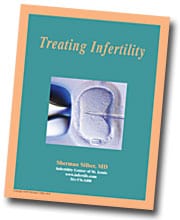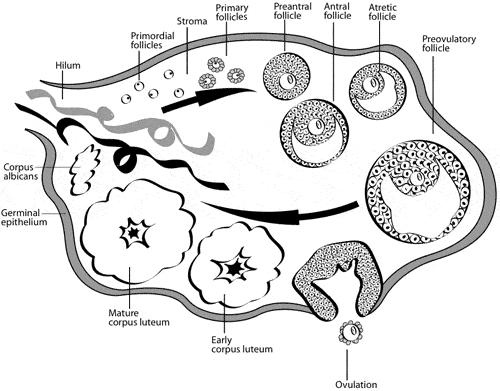Treating Infertility by Sherman J. Silber
Click Here to download Treating Infertility in PDF format.
You Can Save Your Eggs for Later: Egg Freezing & Banking
There are many couples in their twenties and early thirties who are married and committed to each other, but just don’t want children yet. But they are afraid to put off having children into their late thirties or early forties for two reasons: (1) They are afraid that with their biological clock ticking, they will not be able to have children if they wait another ten years, and (2) they are afraid that if they do get pregnant later they will be in an age category where this poses a high risk of abnormal embryos and chromosomal defects in their children. These couples can undergo IVF while they are still young and have their embryos successfully frozen and stored. At a later date, the embryos can be thawed, and the wife can get pregnant even when she is older, with no increased risk of Down syndrome.
Although human embryos can be successfully frozen and thawed, and can result in happy, healthy babies, eggs, until very recently, could not be successfully frozen and thawed. The success rate in freezing eggs had always been extremely low, but this has all changed now. For young female cancer patients, whose ovaries would surely be destroyed by heavy chemotherapy and radiation, we can now remove an ovary, freeze it, and save it to be grafted back to the woman after she has been cured of the cancer. We can do the same with her individual eggs, and save them for subsequent IVF.
Both egg and ovary freezing are now also available for women who just feel a need to delay childbearing until their late thirties and forties, by which time their egg supply will very likely have been depleted. These are wonderful options for the woman who wants her own genetic child but does not anticipate starting a family for many years.
For decades we have been able to use cryogenic technology to freeze and store embryos derived from IVF in order that women not have to risk having a dangerous multiple pregnancy. The embryos can be thawed safely at a later date, and the pregnancy rate with these frozen embryos is still very high. That is nothing new. We have been able to do this since 1983, and long-term follow-up shows no deleterious effect on subsequent offspring. In fact, for many years young couples who are happily married, but want to put off childbearing until later, could readily have their embryos (derived from the husband’s sperm and the wife’s eggs) frozen and saved for later so that they do not sacrifice their chances for later parenthood.
However, freezing embryos for a future date does not solve the problem for unmarried women who want to have children in the future but have not yet met the right man. For these women, freezing their eggs, or even an entire ovary, would be the ideal solution. Until very recently, this holy grail of IVF was unattainable. The reason is that in order for fertilizable eggs to be retrieved, they must be in a mature state of development, with a complex alignment of chromosomes, and this makes them susceptible to even the slightest ice-crystal damage. However, with a new technique of vitrification, recently refined in Japan, icecrystal formation is avoided completely, and early results indicate that very high pregnancy rates can now be achieved with frozen eggs. Thus, a woman who knows that she is nearing a time when she will lose her fertility because of her biologic clock can now freeze her eggs, or a piece of one ovary, and have her babies later.
This new technique of freezing, called “vitrification,” avoids the damage caused by ice forming inside the cell. With vitrification, you are not trying to pull every last molecule of water out, because it is impossible to do this 100%. In fact, 70% of the cell is water, and at best you can reduce that to 30%. So with the conventional controlled rate slow-freezing technique, there is always going to be some intra-cellular ice crystal formation, causing some damage to embryos, and severely damaging most eggs. Vitrification [see video], on the other hand, uses a super high concentration of antifreeze (DMSO and ethylene glycol), and drops the temperature so rapidly that the water inside the cell never becomes ice. It just instantaneously super-cools into a solid with no ice crystal formation at all.
We can now freeze and thaw, and even refreeze and rethaw, with impunity, using this new protocol from Dr. Masashige Kuwayama from the Kato Clinic in Tokyo. With conventional “slow freezing,” the temperature of the embryo goes down at precisely 0.3º C per minute. With vitrification (using four times the concentration of antifreeze, or cryoprotectant), the temperature is dropped at 23,000º C per minute, i.e., 70,000 times faster. At that speed of cooling, and at that concentration of antifreeze, ice crystals simply cannot form.
Of course, it is not quite as simple as it might sound. Such high concentrations of antifreeze, in a few minutes, could be toxic to cells. Therefore, the embryos (or eggs) must first be placed in lower concentrations of antifreeze (and sucrose to draw some water out), and then left in high concentrations only for less than a minute before instantaneous freezing. Then when the time comes to thaw the embryo, it must be instantaneously warmed, immediately taken out of the high concentration of antifreeze, and then placed into a solution with lower concentration, in order to avoid antifreeze toxicity. This requires more skill than conventional freezing, but it is faster, cheaper, and most importantly, avoids almost all freezing damage to either eggs or embryos. Such a reliable method of embryo freezing gives the IVF program much greater ability to avoid dangerous multiple pregnancy, and makes scheduling for procedures like egg donation simpler for the patient. Our frozen embryo pregnancy rates are extremely high with this technique and we can freeze embryos without hurting at all your chance of conception.
Using this vitrification technique for freezing, we can preserve eggs as well as embryos and sperm. This allows us to preserve the fertility of young women for the future in egg banks [see video] if they wish to delay childbearing. In St. Louis, we have demonstrated for the first time that an entire ovary can be removed and then grafted back after freezing and thawing so that even a menopausal woman can gain back her youthful fertility many years later. This new capability will be especially important to women undergoing treatment for cancer, because all the eggs that might have been lost to chemotherapy can be preserved by first removing, freezing, and storing her ovary for use later.
If you are considering freezing your unfertilized eggs, or one of your ovaries just because you want to put off childbearing until you are older, the best approach is to first determine just where you are on your biological clock so that you can know when it’s time to worry. We can now monitor your biological clock from your early twenties on, so you know when you ought to try to have a baby naturally. If you find out that your biological clock is more advanced than you feel comfortable with, you now have the option of freezing an ovary or eggs and saving them until you are finally ready to have your child.




